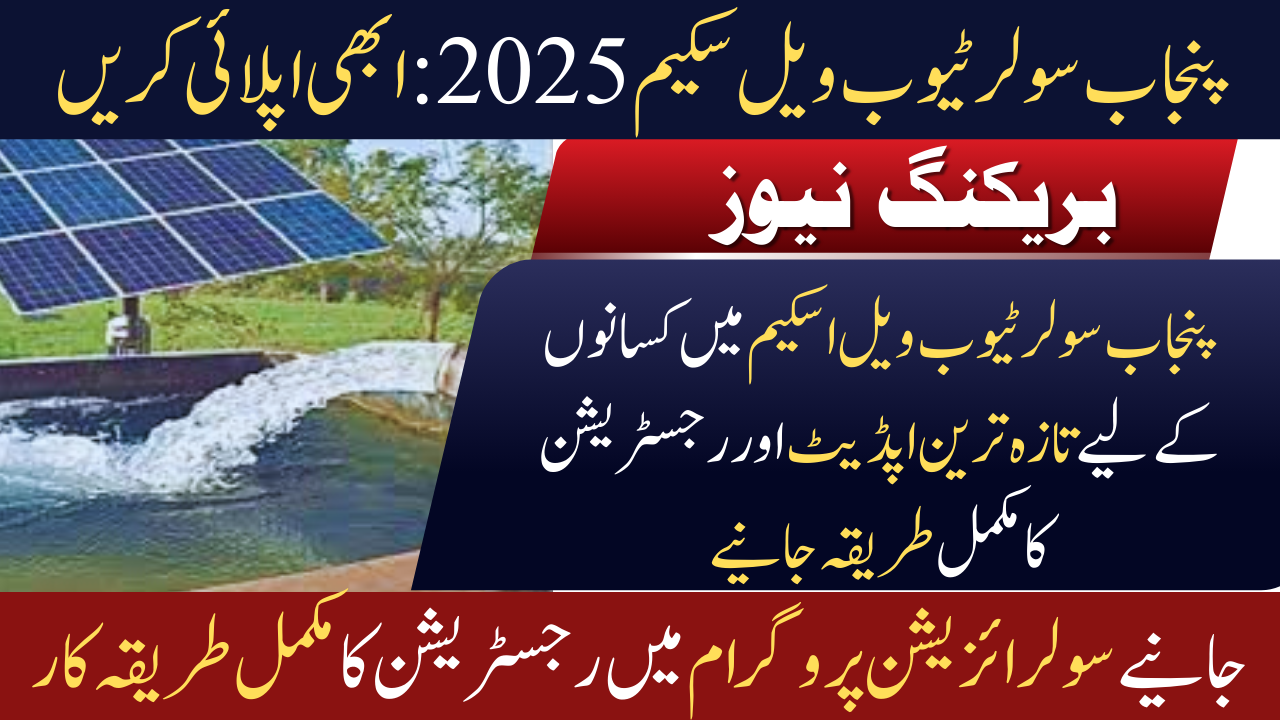In a time when electricity bills are soaring, diesel prices refuse to come down, and load-shedding is still a reality in rural areas, the Punjab government has come up with a timely solution — and honestly, it’s one of the best farmer-friendly moves we’ve seen in years.
Under the Punjab Solar Tubewell Project 2025, farmers across the province can now convert their diesel or electric tubewells to solar-powered systems — and the government will cover 80% of the cost. Yes, you read that right. You’ll only need to pay 20%, and the rest is on the government’s tab.
Let’s dive into the details, how you can apply, who’s eligible, and why this might be a game changer for agriculture in Punjab.
What’s the Punjab Solar Tubewell Project All About?
The government has launched this initiative to promote clean energy in agriculture and reduce the burden of electricity and diesel costs for farmers.
- Solar conversion of existing tubewells (diesel/electric)
- 80% subsidy from the Punjab government
- 24/7 water access without worrying about load-shedding
- Reduce environmental pollution and long-term input costs
Who Can Apply?
Not every farmer is eligible, but if you fall under any of the categories below, you’re in luck:
| Eligibility Criteria | Details |
|---|---|
| Farmer Status | Must be an active farmer (small or medium-scale) |
| Land Ownership | Must own or lease at least 5 to 25 acres of agricultural land |
| Tubewell Type | Must have a working diesel or electric tubewell |
| Water Table | Tubewell should access groundwater from up to 100 feet depth |
| CNIC | Valid Punjab CNIC required |
| Location | You must reside in Punjab and use the land for cultivation |
How to Apply for the Solar Tubewell Scheme – Step-by-Step
Applying is simple, and the registration is now open for September 2025.
Step 1: Gather Your Documents
- CNIC (original & copy)
- Land ownership/lease documents (fard, girdawari, or theka)
- Recent electricity/diesel consumption bill
- Tubewell details (motor capacity, bore depth)
- Passport-size photos
Step 2: Registration Process
You can apply in two main ways:
Online via Agriculture Department Website
- Visit: agripunjab.gov.pk
- Go to “Solar Tubewell Scheme” section
- Fill the form and upload scanned documents
- Submit and wait for confirmation SMS
Offline at Local Agriculture Office
- Go to your nearest Tehsil Agriculture Office
- Submit the form manually with copies of documents
- You will receive a token number for tracking
Why You Should Seriously Consider This
- No more load-shedding stress
- No more diesel costs
- No surprise bills
- 100% ownership — the system is yours
- Increase yield by ensuring timely watering
- Save money every month — possibly thousands
Need Help?
If you’re still unsure, just do this:
- Go to your local Agriculture Extension Office
- Or call the helpline at 0800-17000
- Or message me your district name, and I’ll find your closest registration center
What Will It Cost You?
Here’s how the subsidy works:
| Total Cost of Solar Tubewell System | Government Pays | Farmer Pays |
|---|---|---|
| Rs. 1,000,000 (approx.) | Rs. 800,000 | Rs. 200,000 |
| Rs. 750,000 | Rs. 600,000 | Rs. 150,000 |
| Rs. 500,000 | Rs. 400,000 | Rs. 100,000 |
- Solar panels
- Inverter
- Tubewell motor (if replacement needed)
- Structure, wiring, and installation
- One-year maintenance support
Important Dates
- Application Open Date: 1st September 2025
- Application Deadline: 30th September 2025
- Shortlisting & Site Visit: October 2025
- Installation Phase Begins: November–December 2025
Installation & Maintenance
- The system will be installed by verified solar vendors authorized by the government
- Installation is completed within 15–20 days of approval
- Farmers receive basic training on operating and maintaining the system
- Free repair & maintenance for the first year is included
Why It’s a Game Changer
- Zero electricity bills
- No dependency on diesel or grid power
- Reliable water access during peak hours
- Long-term savings — system lasts 20+ years
- Environmentally friendly farming
Final Words
The Punjab Solar Tubewell Project 2025 is not just a subsidy — it’s a serious step toward modern, self-reliant, and sustainable agriculture. And for small farmers who are struggling with rising costs and unreliable power, this could be the breakthrough you’ve been waiting for.









